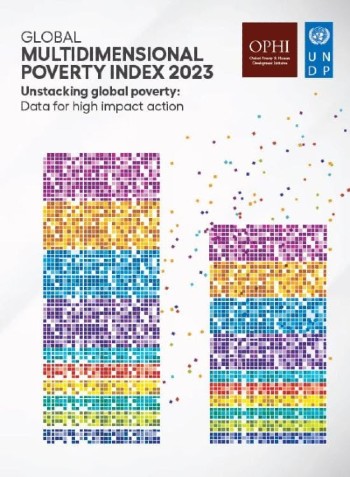NEW YORK, New York – Haiti has been ranked as one of the poorest countries in the world, according to the global Multidimensional Poverty Index (MPI) released on Tuesday.
 The MPI, which examined 110 countries, was released by the United Nations Development Programme (UNDP) and the Oxford Poverty and Human Development Initiative (OPHI) at the University of Oxford.
The MPI, which examined 110 countries, was released by the United Nations Development Programme (UNDP) and the Oxford Poverty and Human Development Initiative (OPHI) at the University of Oxford.
The report demonstrates that poverty reduction is achievable. However, the lack of comprehensive data over the COVID-19 pandemic poses challenges in assessing immediate prospects.
The report noted that across countries the incidence of poverty ranges from less than one percent in 21 countries, five to over 50 percent in 22 countries, 19 of which are in Sub-Saharan Africa, including the poorest four, Burundi, Central African Republic, Chad and Niger.
The MPI notes that there is also extensive variation across regions and that every region has at least one country with incidence below one percent.
The MPI said that the countries with the highest incidence in their region are Afghanistan, Haiti, Niger, Papua New Guinea, Sudan and Tajikistan.
It said these countries also urgently require updated data and that plotting incidence and intensity of poverty for 1,281 subnational regions reveals considerable disparity, even within world regions.
For example, the poorest country in the Arab States has an incidence of just over 52 percent, but 20 subnational regions have a higher incidence, up to 83.8 percent.
“Disaggregating by subnational region also reaffirms the troubling trend that in the places with the highest incidence of poverty, each poor person on average experiences a higher share of overlapping deprivations.
“But regional patterns vary: the Arab States have a steeper curve than East Asia and the Pacific and Latin America and the Caribbean, while Sub-Saharan Africa, with the highest intensity, also has greater dispersion across subnational regions with incidence above 80 percent.”
The MPI notes 566 million people, over half of the 1.1 billion poor people are children under age 18.
It said across the 110 countries analyzed, 27.7 percent of children are poor, compared with 13.4 percent of adults.
“This situation calls for unflagging engagement in reducing child poverty,” the MPI said, noting that to end poverty in all its forms, the interlinked deprivations that poor people experience need to be addressed to reduce the intensity of poverty and thereby empower poor people to exit poverty.
It recalls that people living in multidimensional poverty ordinarily experience multiple deprivations simultaneously.
It said across the 110 countries, between 824 and 991 million of the 1.1 billion poor people lack adequate sanitation, housing or cooking fuel.
“More than half of poor people are deprived in nutrition, electricity or years of schooling,” it added. In all regions except Europe and Central Asia, around half of poor people live in a household where no member has completed six years of schooling, making this a vexing cross-regional issue.
The latest update of the global MPI showed that some countries halved their poverty rates in periods as short as four to 12 years, demonstrating the feasibility of the Sustainable Development Goal (SDG) target of halving poverty according to national definitions within 15 years.
But despite these encouraging trends, the lack of post-pandemic data for most of the 110 countries covered by the global MPI restricts the understanding of the pandemic’s effects on poverty.
“As we reach the mid- point of the 2030 Agenda for Sustainable Development, we can clearly see that there was steady progress in multidimensional poverty reduction before the pandemic,” said Pedro Conceição, Director of the Human Development Report Office.
“However, the negative impacts of the pandemic in dimensions such as education are significant and can have long-lasting consequences. It is imperative that we intensify efforts to comprehend the dimensions most negatively affected, necessitating strengthened data collection and policy efforts to get poverty reduction back on track.”
The global MPI both monitors poverty reduction and informs policy, showing how people experience poverty in different aspects of their daily lives – from access to education and health, to living standards such as housing, drinking water, sanitation, and electricity.


